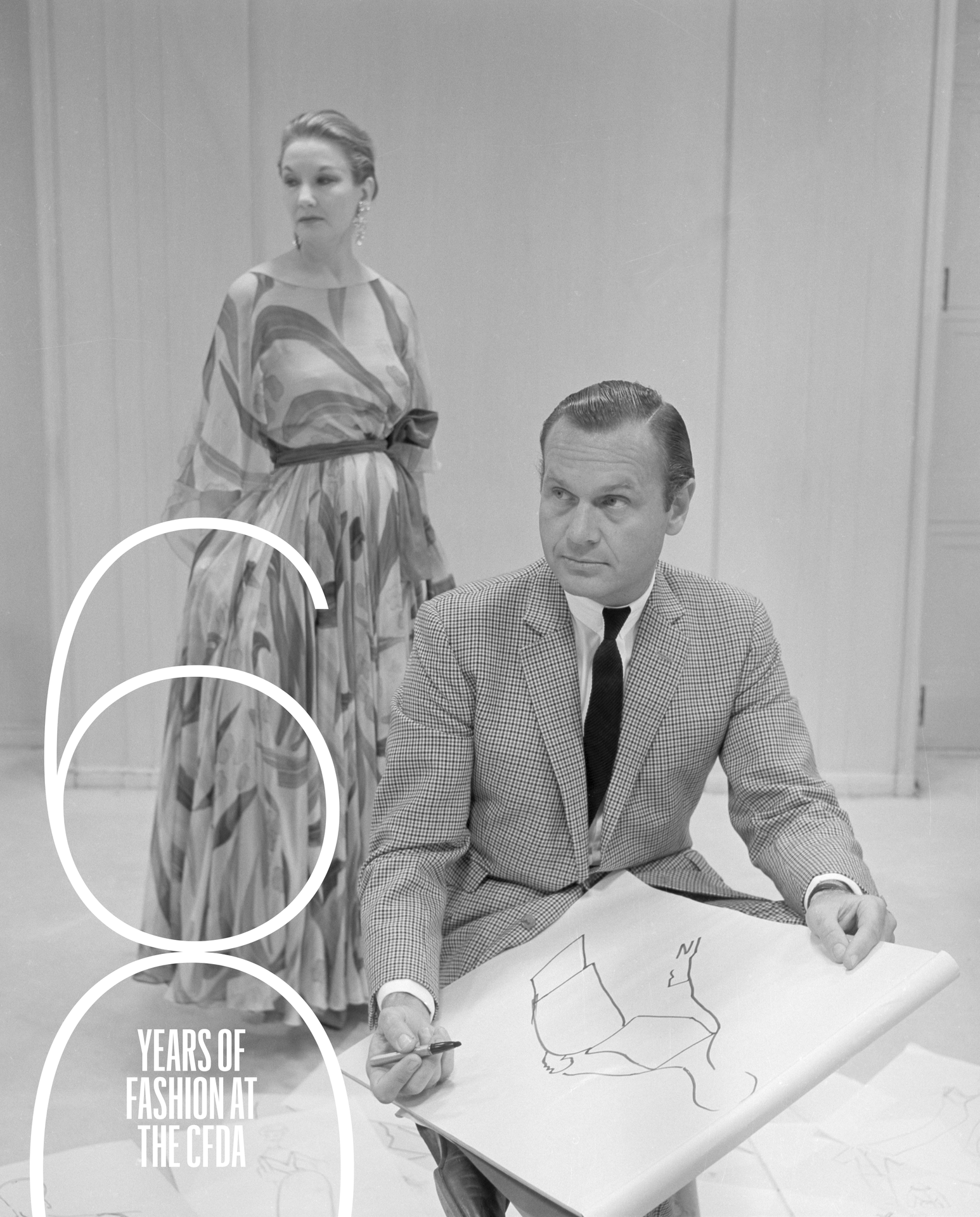When the trailblazing art-turned-fashion publicist Eleanor Lambert founded the CFDA in 1962, American designers were not brands or “houses,” let alone household names. That was the domain of French couturiers and them alone. Meanwhile Americans, such as Geoffrey Beene, Bill Blass and Pauline Trigere, sold their designs to department stores — Macy’s, Saks, Bendel’s and a host of local stores throughout the country — which put their own name on the labels of designer clothes.
“The French really looked at an individual creator almost as an artist,” says Patricia Mears, Deputy Director, Museum at the Fashion Institute of Technology. “There was no equivalent here. We were dominated by manufacturers and department stores and they wanted to keep their name on the label.”
Lambert, influenced by the performing, creative arts as well as Hollywood costume designers getting credit for their work and politics — the Kennedy administration was creating the National Endowment for the Arts — set out to change that and bring more awareness to designers as creative entities worthy of recognition and business. The CFDA was instrumental in this. The charter was signed by 51 designers, including Blass, Rudi Gernreich, Trigere, Norman Norell and Arnold Scaasi, who used the influence of their designs with customers to pressure stores and manufacturers to give them credit on the labels.
The CFDA was quite radical in its transformation of American fashion, but it was a while before its effects took shape. “It didn’t really have that big of an impact on the reputation of American designers until the 70s,” says Valerie Steele, director and chief curator of The Museum at the Fashion Institute of Technology. “Suddenly you had superstar Halston, and just- out-of-FIT young graduate Stephen Burrows. People became more famous as themselves.”
In terms of aesthetics, the 1960s was a game a of two halves. The first was dominated by French design, the second British and then youth culture. In the early 60s, Americans were very much enamored with French culture and design. “There was a real sense that high fashion was coming from across the Atlantic,” says Steele. The dresscode of the early 60s was steeped in formality. Work attire was a suit, a dress, trousers for women who were really pushing the envelope. Even college students wore a jacket and tie, a dress, girdle and stockings to school up until around 1967. Tweeds, in the form of a jacket or suit, were considered relaxed clothing. Denim was a very American look. But, as Mears says, “a well-dressed woman did not wear blue jeans, except in very informal settings.” Adds Steele, “Like a dude ranch.”
When the youthquake, shaped by the Vietnam war, rock’n’roll and rhythm and blues, hit San Francisco around 1967, it changed everything and very quickly. “When you move into the hippie influence and the greening of America, suddenly people were wearing blue jeans all the time,” says Steele.
Pictured: Bill Blass with a model.



